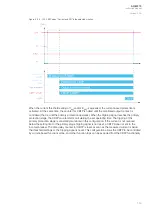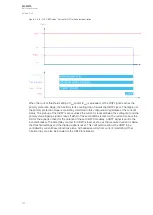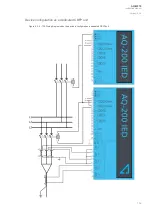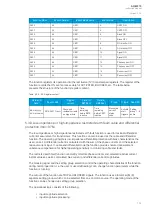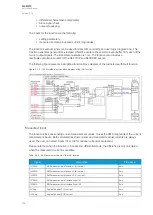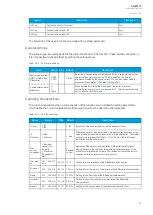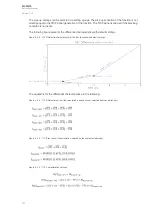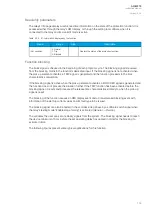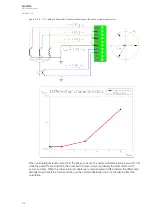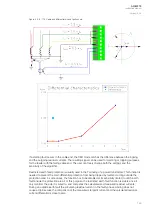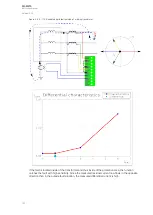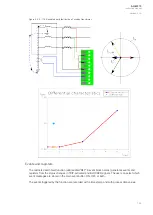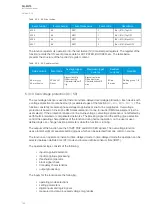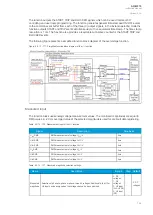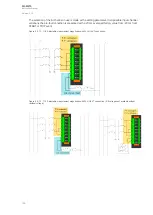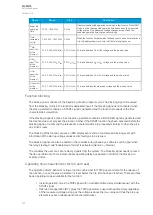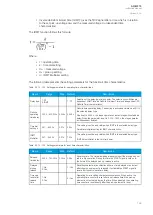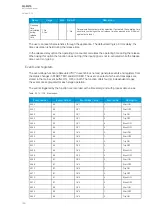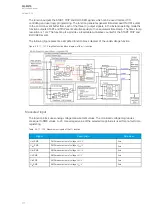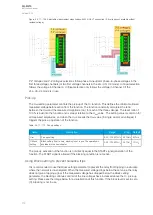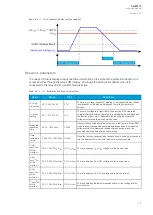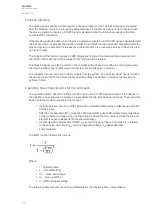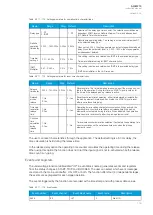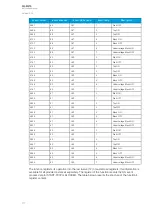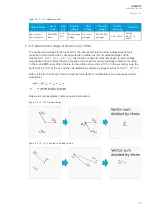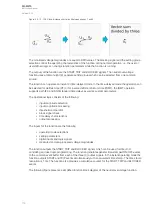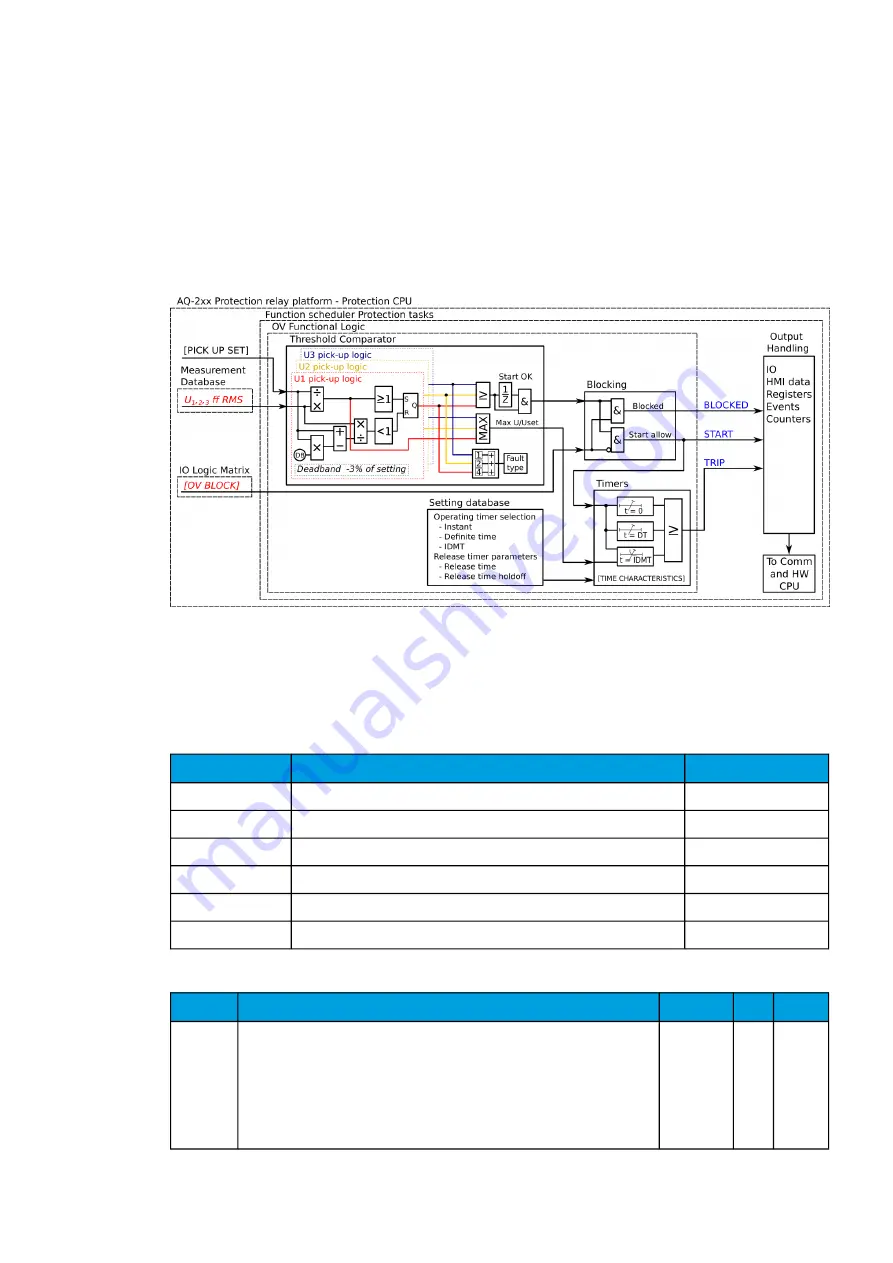
The function outputs the START, TRIP and BLOCKED signals which can be used for direct I/O
controlling and user logic programming. The function generates general time-stamped ON/OFF events
to the common event buffer from each of the three (3) output signals. In the instant operating mode the
function outputs START and TRIP events simultaneously with an equivalent time stamp. The time stamp
resolution is 1 ms. The function also provides a resettable cumulative counter for the START, TRIP and
BLOCKED events.
The following figure presents a simplified function block diagram of the overvoltage function.
Figure. 5.3.10 - 117. Simplified function block diagram of the U> function.
Measured input
The function block uses analog voltage measurement values. The monitored magnitudes are equal to
RMS values. A -20 ms averaged value of the selected magnitude is used for pre-fault data registering.
Table. 5.3.10 - 100. Measurement input of the U> function.
Signal
Description
Time base
U
L12
RMS
RMS measurement of voltage U
L12
/V
5ms
U
L23
RMS
RMS measurement of voltage U
L23
/V
5ms
U
L31
RMS
RMS measurement of voltage U
L31
/V
5ms
U
L1
RMS
RMS measurement of voltage U
L1
/V
5ms
U
L2
RMS
RMS measurement of voltage U
L2
/V
5ms
U
L3
RMS
RMS measurement of voltage U
L3
/V
5ms
Table. 5.3.10 - 101. Measured magnitude selection settings.
Name
Description
Range
Step Default
Measured
magnitude
Selection of phase-to-phase or phase-to-earth voltages. Additionally, the U3 or
U4 input can be assigned as the voltage channel to be supervised.
0: P-P
voltages
1: P-E
voltages
2: U3 input
(2LL-U3SS)
3: U4 input
(SS)
-
0: P-P
voltages
A
AQ
Q-M215
-M215
Instruction manual
Version: 2.04
164

